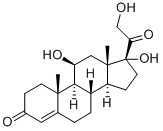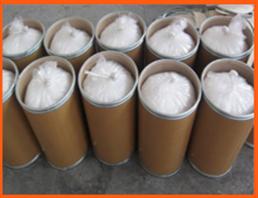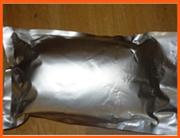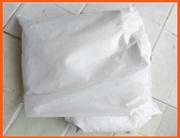Basic Information:
Synonyms: 11,17a,21-Trihydroxy-4-pragnene-3,20-dione; 11-beta,17,21-trihydroxypregn-4-ene-3,20-dione; 11beta,17,21-Trihydroxypregn-4-ene-3,20-dione; 11-beta,17-alpha,21-trihydroxy-4-pregnene-3,20-dione; 11beta,17alpha,21-Trihydroxy-4-pregnene-3,20-dione; 11-beta,17-alpha-trihydroxypregnane-4-ene-3,20-dione; 11-beta-hydrocortisone; 11beta-Hydrocortisone
CAS: 50-23-7
MF: C21H30O5
MW: 362.46
EINECS: 200-020-1

Specification:
| Product Name |
Hydrocortisone Powder |
| Appearance |
White or almost white crystalline powder |
| Specification |
98% |
| CAS: |
50-23-7 |
| Test Method |
HPLC |
| Identification |
(A) Complies by IR
(B) Complies by UV≤2.5% |
| Odor &Taste |
Characteristic |
| Sieve Analysis |
NLT 100% pass 80 mesh |
| Loss on Drying |
<=0.5% |
| Residual Solvents |
1,2-DICHLOROETHANE≤5ppm
METHANOL≤3000ppm
ETHANOL≤5000ppm
BUTYL ACETATE≤5000ppm |
| Total Heavy Metals |
≤10ppm |
| Total Plate Count |
≤5000cfu/g |
| Total Yeast & Mold |
≤100cfu/g |
Introduction:
Cortisol, or Hydrocortisone, is a steroid hormone, more specifically a glucocorticoid, produced by the zona fasciculata of the adrenal gland. Cortisol is released in response to stress and a low level of blood glucocorticoids. Its primary functions are to increase blood sugar through gluconeogenesis; suppress the immune system; and aid in fat, protein and carbohydrate metabolism.
Pharmacology:
Hydrocortisone is the pharmaceutical term for cortisol used in oral administration, intravenous injection, or topical application. It is used as an immunosuppressive drug, given by injection in the treatment of severe allergic reactions such as anaphylaxis and angioedema, in place of prednisolone in patients needing steroid treatment but unable to take oral medication, and perioperatively in patients on long-term steroid treatment to prevent Addisonian crisis. It may also be injected into inflamed joints resulting from diseases such as gout.


 China
China


